Top speed 162 km/h Length 7.84 m Engine type Radial engine | Wingspan 12 m Unit cost 7,500–7,500 USD (1938) Number of seats 3 | |
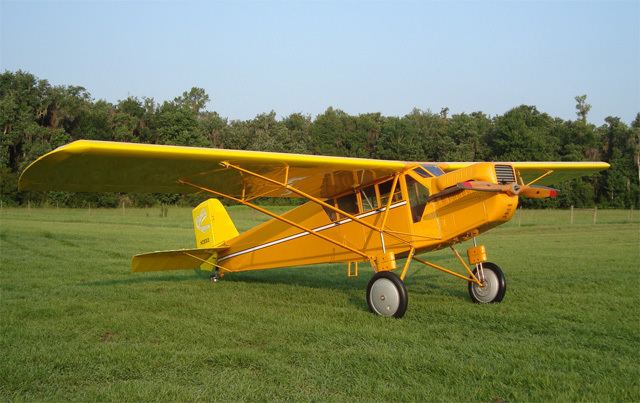 | ||
Manufacturers Curtiss Aeroplane and Motor Company, Curtiss-Robertson Airplane Manufacturing Company | ||
Curtiss robin test flight
The Curtiss Robin, introduced in 1928, was a high-wing monoplane with a 90 hp (67 kW) V8 OX-5 8-cylinder engine built by the Curtiss-Robertson Airplane Manufacturing Company. It was later fitted with the more powerful Challenger engine, which developed between 170 and 185 hp (127 and 138 kW). NOTE: Model B (90 hp/67 kW Curtiss OX-5 engine), Model C-1 (185 hp/138 kW Curtiss Challenger engine), and Model J-1 (165 hp/123 kW Wright J-6 Whirlwind 5 engine)
Contents
- Curtiss robin test flight
- Curtiss robin b 1 collaudo maiden flight
- Design
- Operational history
- Variants
- Military operators
- Survivors
- Specifications Robin OX 5
- References
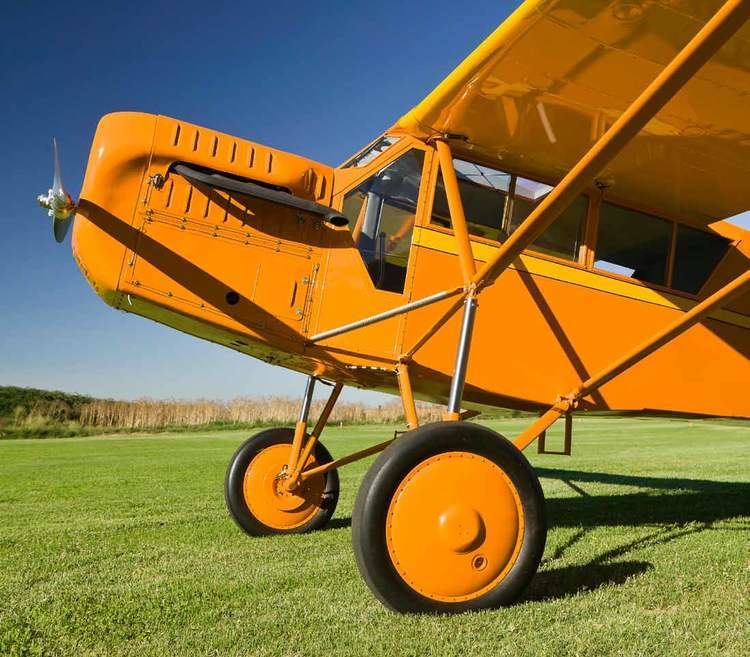
The J-1 version was flown by Douglas Corrigan (nicknamed "Wrongway") as well as The Flying Keys.
Curtiss robin b 1 collaudo maiden flight
Design
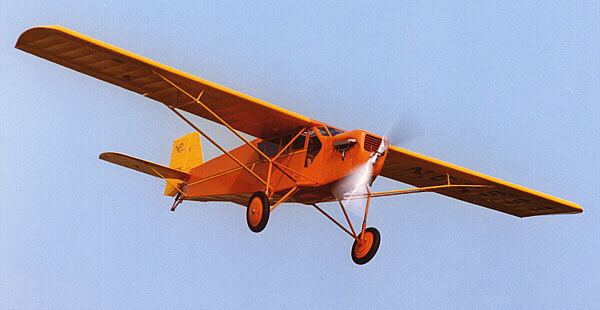
The Robin, a workmanlike cabin monoplane had a wooden wing and steel tubing fuselage. The cabin accommodated three persons; two passengers were seated side-by-side behind the pilot. Early Robins were distinguished by large flat fairings over the parallel diagonal wing bracing struts; the fairings were abandoned on later versions, having been found to be ineffective in creating lift. The original landing gear had bungee rubber cord shock absorbers, later replaced by an oleo-pneumatic system; a number of Robins had twin floats added.
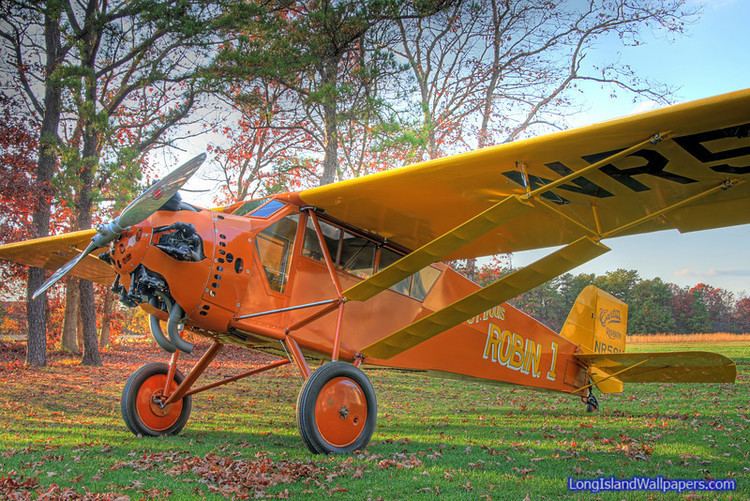
The plane's payload with 50 gal (189 l) of fuel was 452 lb (205 kg); it had a cruising speed of 102 mph (164 km/h), a landing speed of 48 mph (77 km/h), a gas capacity of 50 gal/189 l (25 gal/95 l in each wing tank), its oil capacity was 5 US gal (19 l; 4 imp gal). The aircraft's price at the factory field was $7,500.
Operational history
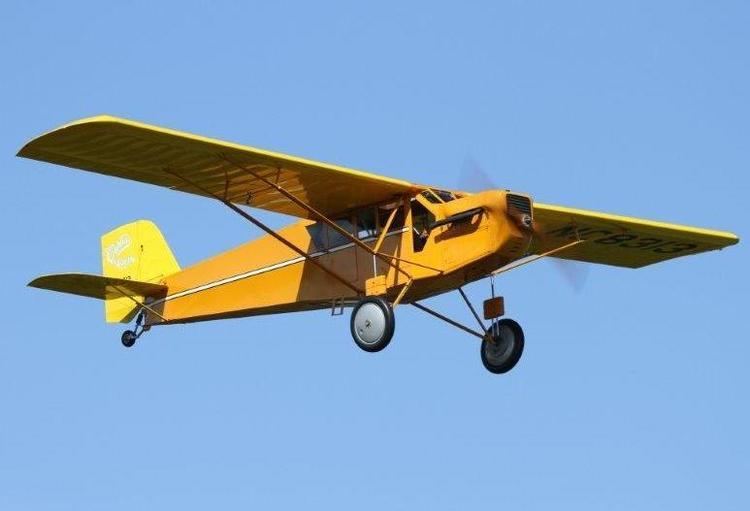
A single modified Robin (with a 110 hp (82 kW) Warner R-420-1) was used by the United States Army Air Corps, and designated the XC-10. This aircraft was used in a test program for radio-controlled (and unmanned) flight.
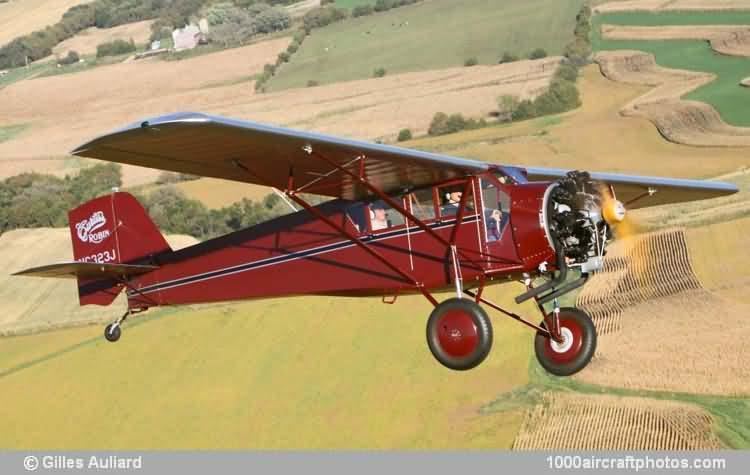
Cuba's national airline, Compañía Nacional Cubana de Aviación Curtiss, was founded in 1929 with Curtiss Aircraft serving as its co-founder and major investor. The airline's first aircraft was a Curtiss Robin; it flew domestic routes as a mail and passenger transport.
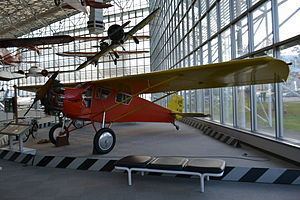
From September 1929 to May 1930, a Robin C-1 was used to deliver the McCook, Nebraska Daily Gazette to communities in rural Nebraska and Kansas. The airplane flew a nonstop route of 380 miles (610 km) daily, dropping bundles of newspapers from a height of 500 feet (150 m) to local carriers.
A Curtiss Robin C was purchased by the Paraguayan government in 1932 for the Transport Squadron of its Air Arm. It was intensively used as a VIP transport plane and air ambulance during the Chaco War (1923–1935).
Variants
Military operators
Survivors
A Curtiss Robin is based at Old Rhinebeck Aerodrome and flies during weekend airshows.
A Curtiss Robin is exhibited on floats at the cradle of Aviation Museum, Garden City, N.Y.
Specifications (Robin OX-5)
Data from Curtiss Aircraft 1907–1947
General characteristics
Performance
